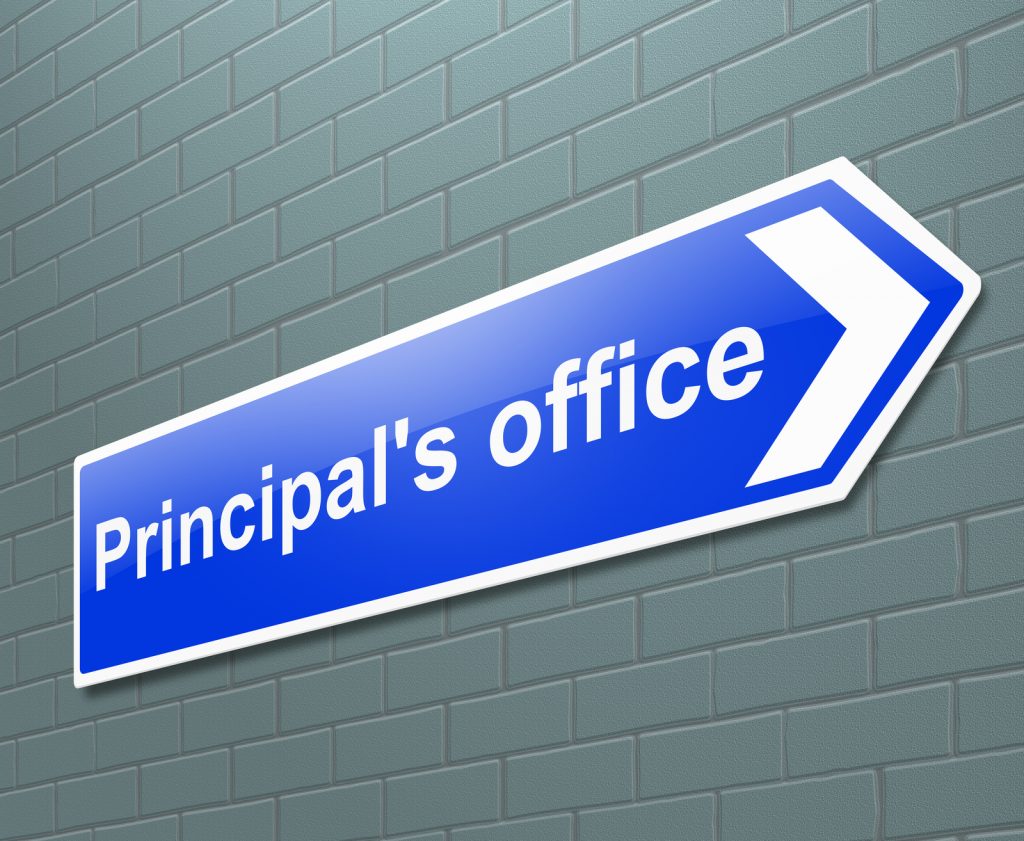 There is no better way to appreciate teachers than by honoring their time and professionalism.
There is no better way to appreciate teachers than by honoring their time and professionalism.
Yet, in so many cases, time for deep, collaborative professional learning is minimal– 3 full days a year seems to be pretty standard, with common planning time during the day sprinkled here and there.
I recently conducted a programmatic review of a district that had not been able to budget full professional days for years. This was rightly viewed by teachers and administrators as the greatest barrier to progress.
The need for professional development has been highlighted by the pandemic and the forced move to “distance learning”.
In my home state of Rhode Island, the governor and education commissioner have responded to that need by issuing a common statewide calendar. In it, they provide dedicated PL days as well as common vacation days.
This gives students a much-needed break. There’s no expectation of logging into a Google meet or needing to be on their screen. Some students, especially older ones might use that as study time as they prepare for AP exams. But for younger students and their families, it’s a much-appreciated pause.
It also gives teachers protected time for professional learning without the expectation of also managing instruction. As I talked with district leaders across the state, I found that the time is being used wisely. Some are learning more about online teaching tools from district and state partners. Others are engaging in much-needed departmental or PLC teams. Some of these meetings are synchronous, others are not.
It’s wonderful that our state leaders recognize the need for protected professional learning time right now, as teachers are trying to navigate this unanticipated crisis.
Yet the need for professional learning isn’t crisis-dependent.
And providing and protecting time for that learning should be a basic condition of the profession in this country (as it is in several other nations).
So, how do we create more time?
A few ideas…
- State agencies can and should rethink “seat time” requirements–including the minimum number of days and/or instructional minutes. We know, and this time is proving it, that with the right support and direction, students can manage time and assignments outside of the classroom walls.
- Districts can scaffold PD days so that district coaches and PL leaders (including teacher leaders) can work with groups of teachers over a series of days. That might mean a series of half days for students or some other formula that allows teachers time for collaboration.
- Schools, especially middle and high schools, can allow for students to work independently and/or collaboratively in libraries orsettings on or off campus and still have that “count” toward attendance. That frees up teachers for more common planning time.
- In elementary schools, forward-thinking teachers and principals can collaborate with outside agencies for authentic experiences on or off campus that give students meaningful learning while giving teachers collaborative time. Many grant opportunities can pave the way for this.
- We can increase the use of micro-credentialing or badging, allowing teachers to work at their own pace, on their own time.
Of course, once the time is created, it must be used well.
To that I say, let your teachers lead the way.
Far too many administrators are stuck in the compliance paradigm.
- We run sessions we think teachers need –and make sure there’s an administrator in the room to facilitate the work.
- We have sign in sheets so we can track attendance.
- We collect minutes and notes (and very likely never read them).
What if, instead, we trusted teachers to lead their own learning?
When I was an assistant superintendent, we created a district-wide professional learning steering committee. Our district-wide Professional Learning Days (or Professional Development, as we called it then) had been met with “just ok” feedback. In addition, the head of the paraprofessionals’ bargaining unit let me know that they were extremely dissatisfied with what the district had been providing for professional development.
So, we set about to change that–to put people in charge of their own learning. Ultimately, two teachers became co-chairs of the committee and we collectively transformed the feeling of PD days. Faculty and staff gave positive feedback and, more importantly, more ideas for improvement. Some administrators attended sessions, others facilitated, some did a mix of both. By the time I left the district, we had ideas and plans for even more personalized and asynchronous opportunities.
No babysitting. No compliance. Just lots of good learning–which translated into deeper and more joyful learning for our students.
And with even more time, and more creative uses of time, we can do better and better by our students and ourselves.
So, let’s appreciate teachers with more than signs and gifts during a single week. Let’s give them the time they deserve to hone their skills and their craft. Let’s appreciate their intellect and expertise by giving them the gift of time.
Read More
Teachers are overwhelmed. Parents are overwhelmed. Leaders are overwhelmed.
And, to be fair, this feeling isn’t new for educators, though it’s magnified now.
It’s time to simplify.
Simple does not mean easy. Simple does not mean that we are letting up on learning.
Instead, when we simplify, we arrive at what’s really essential.
When I’ve worked with curriculum teams, we usually start with the work of DuFour, et. al.
Here are their “big questions” to guide teaching and learning.
- What do we want all students to know and be able to do?
- How will we know if they’ve learned it?
- How will we support students when they struggle?
- How will we enrich the learning for students who are already proficient?
Educators always love these questions.
Great, I say. So, now, let’s answer that first question.
Teachers pull out their state standards, textbooks, final exams, etc and soon our response to question 1 fills up pages.
It becomes clear that we cannot teach everything if we want students to learn deeply and joyfully.
We need to strip down to the essential standards.
Teachers understandably have trouble with this. EVERYTHING feels essential.
But then I ask them to picture a capable student in their class. Now, consider that this student will endure some tough circumstances this year–perhaps illness–that causes him/her to be out for a significant portion of the year.
Most teachers can’t conceive of having this student repeat an entire year or course. So they then consider what the student would REALLY need to know and be able to do in order to move beyond this class or course.
We use this guidance from Larry Ainsworth to choose our essential standards (aka Power or Priority Standards.)
Essential standards are those that exhibit:
- Endurance–skills and knowledge needed for life outside this course
- Leverage–skills and knowledge from this course that help us learn and understand standards in other courses
- Readiness–skills and knowledge that we must have to advance to the next year/course
In fact, there are schools and teachers that do this regularly for students with special circumstances.
We just never considered that we would need to do this for all students…in all subjects.
But we can. Simplify. Get down to the essentials–the real and true essentials and go from there.
Right now, I would ask teachers to consider the ONE thing students must know or be able to do between now and next year. How can we teach that? How will we (and students) know if they’ve learned it?
Then, go on to prioritize the NEXT thing on the list and so on. If the first is all we can reasonably achieve this year, so be it.
Kudos to those districts that have made this focus on essential standards crystal clear, reducing overwhelm and giving space for deep and joyful learning.
#ourFCPS friends- Essential Standards for remaining instructional weeks for ES & MS are posted to Distance Learning Support (teacher-facing) BB site. For ES, also posted to ECF google site at https://t.co/LauP8aXIwm (FCPS google log-in required). @kmkoelsch @christiepday pic.twitter.com/uP74XXrrLp
— Andrea Hand (@AndreaHand2) April 12, 2020
Read More

This is surreal!
“This just doesn’t feel right! I miss the kids. I miss the teachers. I miss visiting classrooms, shaking hands with students as they enter the building, laughing with teachers at lunch duty!”
This, or some version of this, is what I’m hearing from the principals I work with.
Most school leaders hate to be out of their schools. Whether it’s being called away to a district meeting or staying home sick (a rare occurrence), most principals will do anything to avoid being out of the building.
So, sitting at home–or behind your desks in empty schools–is no doubt a jarring experience.
Yet all over the country, principals like my friend Anne in Maine tell me the current crisis has raised their game.
In conversations with school leaders over the phone, Zoom, and Twitter, leaders have shared the ways they are making connections, supporting learning, and–perhaps most importantly–demonstrating their own vulnerability.
Here are some awesome examples of leading remotely:
Fostering connection:
- Asking teachers for names of students they are concerned about. Depending on the size of your school, call one or 2 from each class, each week/day. On a schedule that works for you.
- Sending a thank you note to each staff member with something you’ve admired about him/her and perhaps never said. One or two sentences goes a long way.
- Creating themed weeks–connect to school spirit and/or school mission.
A1: Search #StayConnectedCPS and see photos of our amazing and innovative students and staff taking on our Chesapeake 5Cs Virtual Challenge last week. Lifelong learners in action! #valinchat pic.twitter.com/7SbNLU9K2n
— Alaina Trott (@AlainaTrott) April 2, 2020
Instructional Leadership:
- Dropping in on a synchronous zoom session.
- Sharing an article/podcast resource.
- Offering 1:1 office hours with teachers to check in and provide any support or feedback requested
A3. Zoom #valinchat I use for office hours to hang out with the #5800family because I miss them ❤️ pic.twitter.com/YhT2cGl21b
— Shameka N. Gerald (She/Her) (@Shameka_Gerald) April 2, 2020
Vulnerable Leadership:
- Set up calls with teachers–ask them how you can do more for them–in crisis and not.
- Try a new tool publicly. It won’t be perfect, but that’s ok–we’re all in the same boat right now!
- Use this time to try something new–painting, poetry, etc–and share the results.
A2: My kids + I are challenging ourselves to try/learn something unrelated to SOLs each week. I challenged myself to learn how to watercolor + I am finding it's very calming! Making sure to carve out "me" time, being outside, and virtually connecting with friends! #VaLinChat https://t.co/3jmJiJGCZw
— Megan Howland (@meganahowland) April 2, 2020
Thanks to all who are leading…and sharing! To share more examples or get some coaching support, you can contact me here.
Read More

There are many, many real challenges associated with these school closings. I don’t take them lightly and I appreciate the leaders working to ensure equity, provide services and promote a caring culture from a distance. To those of you doing that, I thank you.
In the midst of this, though, we can find opportunities.
Now is a time to ask ourselves how we have been constrained by our school calendars and daily schedules. Now is a time to encourage experimentation and growth so that we might return to school with fresh ideas.
Here are few possibilities…
What if…
- Instead of teachers meeting with their classes or sections, they met according to interest/need groups? In high school and middle school, teachers teach multiple sections of the same course. Why not mix and match students for new groupings? Some might be based on need and teachers could use the time for focused tutorials. Others might be based on interest and might be more student-led while the teacher observes or facilitates?
- Teachers dropped in, or even guest-lectured, in one another’s classes? A fourth grade teacher might drop into a third grade class to get a sense of where her future students stand. A social studies/history teacher might drop into a math class to get a sense of how his students approach that subject?
- Teachers paired up to create optional interdisciplinary interactive lectures via zoom? Math and science teachers might come together to show students how their subjects merge. ELA and History teachers might do the same.
There are so many more. We have allowed ourselves to be limited by any number of constraints—the length of day and of classes, the limited time for professional interaction, etc. We have an opportunity right now to go beyond class time and physical walls. Let’s see what we can do with it.
I would love to hear how others are experimenting…
Read More
